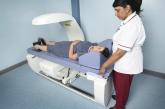Article

Skip that repeat DXA scan in these postmenopausal women
- Author:
- Alexander Zweig, MD
- Carl Tunink, MD
- Laura Morris, MD, MSPH
Repeat bone density measurement offers no advantage in predicting fracture risk in postmenopausal women who do not have osteoporosis.
Article

An Easy Approach to Obtaining Clean-catch Urine From Infants
- Author:
- Laura Morris, MD, MSPH
Babies require patience—but the hour-long process of collecting a clean-catch urine sample is (let's face it) a bit excessive. The good news is...
Article

An easy approach to obtaining clean-catch urine from infants
- Author:
- Laura Morris, MD, MSPH
Current collection methods leave much to be desired. But a new method may provide a quick alternative.
Article
An alternative to warfarin for patients with PE
- Author:
- Laura Morris, MD, MSPH
- James J. Stevermer, MD, MSPH
Rivaroxaban appears to be as safe and effective as warfarin, without the need for lab monitoring.
